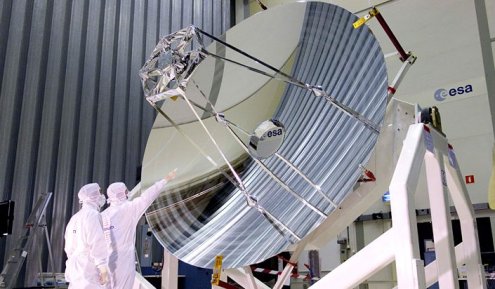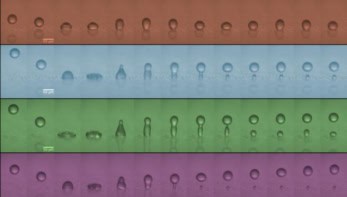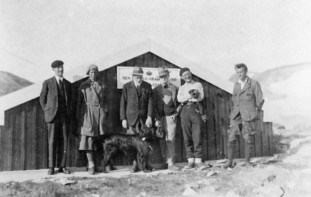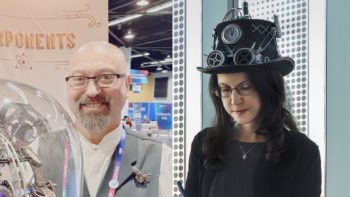
Inspecting the 3.5 wide mirror of the Herschel telescope
By Michael Banks in Miami, Florida
It seems I have something (rather tenuously, I admit) in common with the European Space Agency’s Herschel mission: we were both “born” in 1982. (Although I am not sure what else I could have in common with a space satellite.)
Goran Pilbratt from the European Space Agency (ESA) told delegates today at the 216th American Astronomical Society meeting in Miami, Florida, all about the Herschel mission that was first proposed way back in May 1982 at an ESA workshop.
Herschel features two cameras (named PACS and SPIRE) and a spectrometer (HIFI) to study star formation in our galaxy and galaxy formation across the universe.
Herschel also has a dewar of liquid helium that cools its detectors down to 2 K so that it can better measure objects in the sky in infrared via its 3.5 m wide mirror.
With 30 years invested in the instrument, you could perhaps forgive astronomers for being nervous when Herschel launched on 14 May 2009. “Herschel has no moving parts, so if there is something wrong after it launches we can’t do anything about it,” says Pilbratt.
Herschel in the end made a “perfect launch” and it even started taking data only 30 hours after launching.
But not everything has been plain sailing since then. In August 2009 HIFI stopped working and its software had to be rebooted taking around five months in total to fix.
Once back online in January, astronomers are now really reaping the rewards of HIFI. Pilbratt showed some spectroscopy data taken from the Orion constellation that contained more than 100,000 spectral lines originating from signatures of specific elements or compounds. That’s likely to take some time to trawl through.
Indeed, although the Herschel mission has only been going for around a year, astronomers have already written more than 120 research papers, which will be published in an upcoming special issue of Astronomy and Astrophysics. With another three years to run, that is likely to only be the start.



